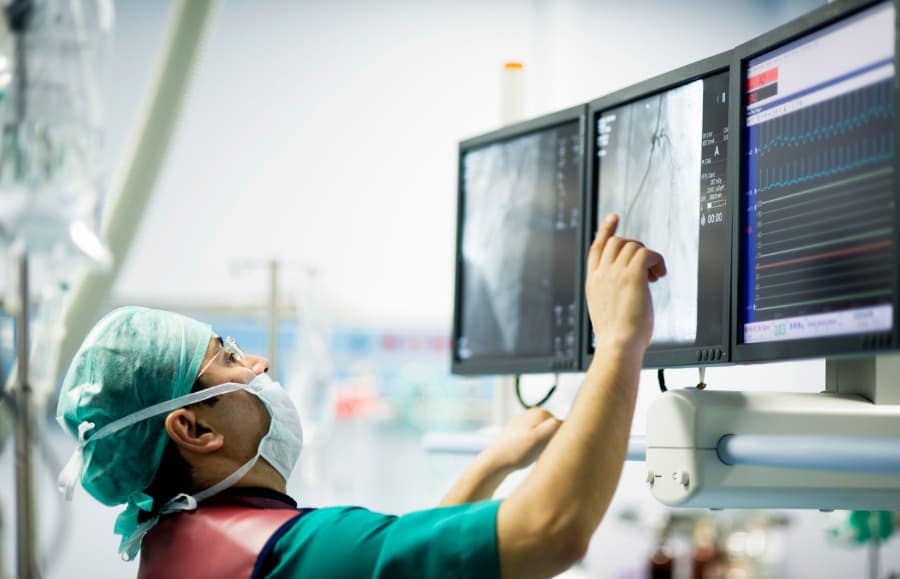Angioplasty is a common medical procedure that restores blood flow within a clogged or narrowed artery, caused by plaque building up within them. An issue within an artery can lead to major health problems in the body. Patients should know the different conditions an angioplasty procedure treats and what to expect if they undergo one.
Richmond University Medical Center in Staten Island, New York, provides cardiovascular care, including angioplasty. Here, we discuss the different health issues addressed through angioplasty, its benefits, and the care this minimally invasive procedure provides patients.
Explaining Angioplasty
Clogged or narrowed arteries can have severe health consequences since the body’s functions depend on consistent blood flow. An angioplasty is a way to help treat clogging and narrowing in the arteries. During an angioplasty, a tube called a catheter runs to a clogged artery. The catheter or another structure pushes aside or destroys the plaque, restoring blood flow. Patients may undergo an angioplasty as an elective or emergency procedure, depending on their needs.
Types of Angioplasty Procedures
Physicians can perform an angioplasty on arteries throughout the body. Different forms of angioplasty correspond to the treated artery, including:
- Carotid angioplasty: This is performed on neck arteries.
- Coronary angioplasty: This is performed on heart arteries.
- Peripheral angioplasty: This is performed on arm, foot, and leg arteries.
- Renal angioplasty: This is performed on kidney arteries.
A patient can undergo angioplasty in various forms including:
- Atherectomy and laser angioplasty: A catheter equipped with a laser goes to the impacted artery to destroy the plaque inside.
- Balloon angioplasty: Physicians run a catheter with a small balloon on the tip of an impacted artery. There, they inflate the balloon, which expands and compresses the plaque against the artery walls.
- Cerebral angioplasty: This type of angioplasty helps prevent a stroke by treating impacted head and neck arteries by opening them up with a balloon or stent.
- Percutaneous coronary intervention (PCI): This form of angioplasty also uses a balloon or stent to open clogged or narrowed heart arteries.
- Stent placement in the artery: Physicians may place a small metallic structure called a stent within the repaired artery to help keep it open.
Benefits of Having an Angioplasty
While individual results will vary, angioplasty is generally known to help prevent future artery clotting and/or narrowing. The procedure itself is less invasive than major surgery, only requiring local anesthesia and IV injections that treat the affected artery or arteries. The procedure can improve heart and kidney health or lower the risk of the patient having a stroke.
Conditions Treated With Angioplasty
An impacted artery can lead to broader medical complications. The whole body relies on consistent blood flow to distribute the oxygen it requires to function. Through angioplasty, physicians can address several health issues within the body. The procedure can help correct conditions leading to health issues so patients can go on to live healthier lives. Patients who undergo angioplasty are commonly dealing with conditions such as:
- Atherosclerosis: This is the term for the buildup of plaque formed by cholesterol and fat within an artery.
- Carotid artery disease: Under this condition, arteries that bring blood to the brain are clogged or narrowed.
- Chest pain: This refers to experiencing a dull or sharp sensation between the neck and stomach.
- Chronic kidney disease: This disease occurs when the kidneys are no longer able to filter out excess water, toxins, or waste. They cannot help maintain normal blood pressure in the body.
- Coronary artery disease: This condition forms when cholesterol, fats, or other substances collect within the arteries that deliver blood to the heart.
- Congenital heart defects: These are heart conditions that a patient is born with.
- Heart attack damage: Damage to a heart muscle during a heart attack depends on how large the area the impacted artery gave blood to and how quickly the patient received treatment.
- Heart valve disease: Four valves ensure that blood is moving properly within the heart. A single blocked or shut valve can disrupt this function.
- Irregular heartbeat: An irregular heartbeat, called an arrhythmia, happens when the electrical system within the heart malfunctions.
- Peripheral artery disease: Blood flow is cut off to the arteries of the arms and legs under this condition.
- Renal artery stenosis: Also called renovascular disease, this condition develops due to a disruption to the kidneys’ blood supply.
Access Angioplasty Treatment at Richmond University Medical Center
You and your family deserve quality heart healthcare. The cardiac catheterization laboratory at Richmond University Medical Center in Staten Island, NY, treats several heart conditions. Contact the Cardiovascular Department at 718-818-7425 to schedule an appointment to discuss if you or a loved one should undergo an angioplasty.




